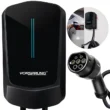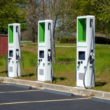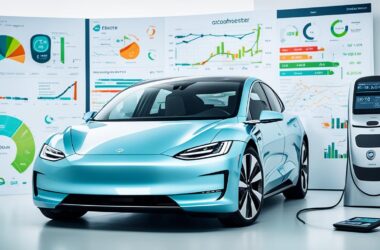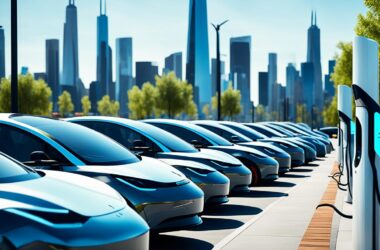Introduction
Investing in an electric car is a significant step, but the prospect of charging at home shouldn’t be a cause for concern. Home charging offers convenience, reliability, and potential cost savings compared to public charging stations. This guide aims to ease your decision-making process by exploring key factors such as power needs, hardware options, and associated costs. The best EV Charger depends upon every individual.
Step 1 – Type 2 or 3-Pin Charger: Making the Right Choice
Electric vehicle (EV) chargers come in two types:
Type 2 Chargers:
- Wall/post-mounted smart chargers.
- Directly connect to your Residual Current Device (RCD).
- Offer fast charge speeds (up to 7.4kW single-phase, 11kW domestic three-phase).
- Provide up to 28 miles of range per hour at 7.4kW.
3-Pin Chargers:
- Portable Type 2 to 3-pin chargers.
- Plug into a 3-pin socket.
- LED display for voltage readout and charge session duration.
- Ideal for on-the-go charging.
- Offer 8 miles of range per hour at 2.3kW.
Recommendation: If you have off-street parking, Type 2 chargers are safer, offer longer warranties, and faster charging. However, 3-pin chargers are suitable for low-mileage users and those without off-street parking.
Step 2 – Tethered or Untethered Charger: Weighing the Options
The choice between a tethered and untethered charger involves considering convenience versus flexibility:
Tethered Chargers:
- Charging cable permanently attached to the unit.
- Ensures cable availability and security.
- Limits parking flexibility.
- No risk of cable loss or theft.
Untethered Chargers:
- Detachable charging cable for flexibility.
- Neater cable storage when not in use.
- Users can take the cable for charging elsewhere.
- Risk of cable damage or theft.
Recommendation: Consider your parking setup and personal preferences to choose between the tethered and untethered options.
Step 3 – Smart Features: Understanding the Basics
Smart chargers, as per regulations, must include essential features:
- Send and receive information.
- Respond to signals for adjusting charge rate or time.
- Demand side response services and user interface.
- Electricity supplier interoperability.
- Continued charging in the absence of a network connection.
- Measuring system for imported/exported electricity.
Additional Smart Features:
- Preset, off-peak, default charging hours.
- Randomized delay function.
Recommendation: Prioritize chargers with essential smart features and assess additional functionalities based on personal preferences.
Step 4 – Reviews and App Evaluation: Ensuring a Seamless Experience
Before making a purchase decision, delve into reviews for both the charger hardware and accompanying apps:
Charger Hardware Reviews:
- Real-world performance insights.
- Build quality assessment.
- Ease of installation.
- Charging speeds and reliability.
App Reviews:
- Capabilities assessment.
- User-friendliness feedback.
- Connectivity stability.
- Features like charge scheduling, usage tracking, cost estimation, and solar integration.
Recommendation: Thoroughly research reviews to ensure both the charger and its app meet your expectations for performance and user experience.
Conclusion
Choosing an EV charger involves considering charger type, tethering preference, smart features, and user reviews. By following these steps, you’ll be well-equipped to make an informed decision, ensuring a seamless home charging experience for your electric vehicle.









